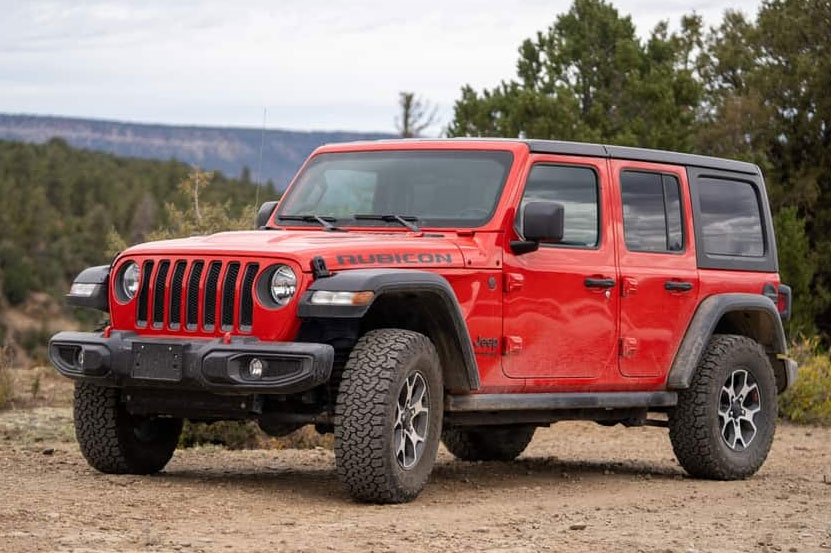Buying a Jeep can be an exciting experience, whether you’re eyeing the rugged Wrangler or the spacious Grand Cherokee. However, navigating the financial aspects can feel overwhelming, especially when it comes to understanding the invoice cost. Knowing the invoice cost is crucial, as it can help you get the best possible deal. In this article, we’ll break down how to determine the Jeep invoice cost in a simple, straightforward way without any confusing terms.
What is the Invoice Cost?
The invoice cost is the amount the dealership paid to acquire the vehicle from the manufacturer. This number is often lower than the car’s MSRP (Manufacturer’s Suggested Retail Price), which is the price you’ll typically see on the window sticker. Knowing the invoice cost gives you a better idea of how much wiggle room there might be for negotiation.
Dealerships usually sell cars above the invoice price to make a profit, but sometimes they are willing to negotiate closer to this cost. It’s a great way to ensure you’re not overpaying.
Why Is the Invoice Cost Important?
Understanding the Jeep invoice cost is valuable because it gives you a better sense of the dealer’s profit margin. This doesn’t mean you’ll always get the car at invoice price, but it can guide your negotiations. If you know the dealer’s starting point, you can negotiate more effectively.
Steps to Determine Jeep Invoice Cost
Here are some practical steps to help you find the Jeep invoice cost:
1. Use Online Resources
One of the easiest ways to determine the invoice cost of a Jeep is by using online tools and resources. Several websites provide this information, allowing you to search by make, model, and year. Websites like Edmunds or Kelley Blue Book are popular sources for finding the invoice price of vehicles, including Jeeps.
To use these tools:
- Enter the model and year of the Jeep you’re interested in.
- Select the specific trim and features you want to be included in the vehicle.
- These websites will then provide you with an estimated invoice price, alongside other helpful data like MSRP and fair purchase prices.
Using these tools gives you a rough estimate of the invoice cost, which can be handy before visiting the dealership.
2. Ask the Dealership Directly
Another straightforward approach is to ask the dealer for the invoice cost. While not all dealerships will freely provide this information, some may share it if they believe you’re a serious buyer. Even though dealerships aim to make a profit, being informed can help you make a reasonable offer.
To make this request, you could say something like, “Can you show me the invoice cost of this vehicle?” Be polite and explain that you’re looking to understand your options better before finalizing the purchase. The more informed you are, the more likely they’ll be to take you seriously during negotiations.
3. Consider Dealer Fees and Incentives
It’s important to remember that the invoice cost may not be the final amount the dealership paid for the Jeep. Many manufacturers offer dealerships various incentives and rebates, which can lower the overall cost to the dealer. These savings are not always reflected in the invoice price.
For example, a dealership may receive incentives for selling a specific number of vehicles within a given timeframe. While these incentives aren’t typically shared with buyers, knowing that they exist can give you more confidence when negotiating. You can even ask the dealer about any incentives or rebates that might be applicable to your purchase.
4. Compare Prices
Once you have a good idea of the Jeep invoice cost, it’s helpful to compare prices from multiple dealerships. If one dealership isn’t willing to negotiate, another might be. Shopping around is a great way to gauge the local market and get the best deal possible.
Don’t hesitate to let dealers know you’re comparing prices. Often, this will encourage them to offer you a better price or additional incentives to win your business.
5. Look for Dealer Holdback
One lesser-known fact is the existence of a dealer holdback, a percentage of the car’s price that the manufacturer pays back to the dealership after the sale. This holdback amount, usually around 2-3% of the MSRP or invoice price, allows the dealership to still make a profit even if they sell the car at or below invoice.
While you won’t always know the exact amount of the holdback, keeping this in mind can be useful when negotiating. Even if a dealer says they’re selling you the Jeep at invoice cost, they may still be profiting through the holdback.
6. Take Timing into Account
Timing your purchase can also influence the deal you get. Dealerships often have sales quotas and may be more willing to negotiate closer to the end of the month, quarter, or year. Additionally, purchasing a Jeep at the end of the model year, when new models are arriving, can help you get a lower price since dealers are looking to clear out old inventory.
7. Factor in Additional Costs
When calculating the total cost of the Jeep, remember that the invoice cost isn’t the final price you’ll pay. There will be additional costs such as taxes, registration fees, and potentially other dealership charges. It’s important to factor these in when budgeting for your new vehicle.
Conclusion
Determining the invoice cost of a Jeep is a helpful strategy when looking to make an informed purchase. By using online tools, asking the dealership, and understanding the additional factors like incentives and holdbacks, you can gain insight into how much the dealership paid for the vehicle. With this knowledge, you’ll be better equipped to negotiate and ensure you’re getting a fair price.
Buying a Jeep doesn’t have to be stressful. Armed with this information, you can walk into the dealership with confidence and get closer to the deal that’s right for you.

